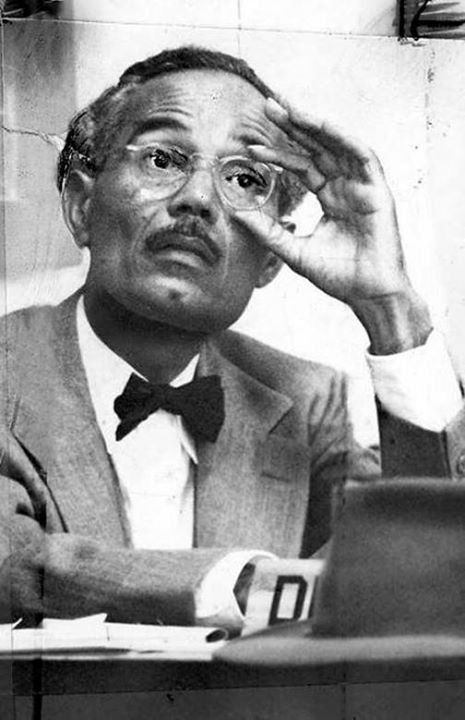
Pedro Albizu Campos
Each generation has to gather the ashes of their elders. Those who do not revere the ashes of their elders are truly dead; the ones who are extinguished in the cosmos because they are not worthy of the human personality.
Many don’t know his name. He was the president of the Partido Nationalista Puerto Rico. He called for armed revolution, simultaneous uprisings in towns around Puerto Rico, and an attack on La Fortaleza. But we have to ask, why? Why did he do these things? Was he a psychopath who tried to violently overthrow the United States? Or was this born from a profound need for extreme actions? We cannot fully understand him or his valiant fight for independence without understanding the circumstances from which he evolved. Some call him a terrorist, and others call him a hero. This is the story of Pedro Albizu Campos, known affectionately by many as Don Pedro 1.
- Early Life
- Context
- Albizu attends university in America
- Return to Puerto Rico
- Albizu discovers Rhoads’ Medical Experiments
- Sterilization of Puerto Rican Women
- Land Ownership
- An unexpected victory and cane strikes
- A Meeting With Police Chief Riggs
- Riggs Declares War
- First Arrest
- The Ponce Massacre
- Return to Puerto Rico and a present from Muñoz Marin
- “The hour of decision has arrived!”
- The Plan
- Revolution or Tragedy?
- Imprisonment and Medical Experiments
- What did Albizu Campos and the 1950 Revolution accomplish?
- Notes:
- Works Cited
(Note: This article will be periodically edited and revised)
Early Life
Pedro Albizu Campos was born on June 29, 1893 or September 12, 1891 2 in Barrio Machuelo Abajo or Barrio Tenerias, Ponce, Puerto Rico3. His mother, Juliana Campos Collazo (1857-1895) was the daughter of enslaved people. Due to her apparent signs of mental illness, the townspeople called her ‘La Llorona’. His father, Alejandro Albizu Romero (1843-1920), a merchant of Basque ancestry living in Ponce, was married at the time of Albizu’s birth. Romero denied his son because of his dark complexion (and because he was born out of wedlock). Don Pedro did not use his father’s surname until after September 1914, when his father finally legally recognized him as his son. Pedro’s mother tried to kill herself and Pedro several times when he was very young. She died when he was just four years old.; his maternal aunt, Rosa, raised him.
Read more: Don Pedro Albizu Campos; Genius revolutionary, Boricua Hero (second revised edition)
Authors Note: Both June 29, 1893 and September 12, 1891 have been stated as Albizu Campos’s birth dates. One clue, which would point to the 1891 date, as his birth date is that official records state that Juliana Campos died in 1895, when he was 4 years old. Most agree that he was 4 when his mother died, if he was born in 1893 then he would have only been 2 at the time of her death.
It is has also been deemed possible that the birth certificate seen above was not Albizu Campos’ but was a sibling that died at a young age who his mother also named Pedro Campos. It’s possible that when Albizu was born, he was not registered in the civil registry, leading to the confusion. When Albizu Romero legally recognized him as his son, they could have been a mix up and the amendment was added to the incorrect birth certificate.
This story has been stated by Rosa Meneses Albizu Campos, Don Pedro’s granddaughter, as an explanation surrounding Albizu’s actual birth date and year. She also stated he always celebrated his birthday on June 29. She humorously remarked, “what was important was that he was born”, which basically sums up the entire conversation. There is no definitive answer, Don Pedro used both birth dates and years throughout his life. For this article I have chosen to assume his birth year as 1891 when calculating his age.
Don Pedro was very, very intelligent, even as a young child, and even figured out how to make the town bell ring at 3:00 am to wake everyone up. He was intrigued when he learned about a sport the Americans had brought to the island, it was baseball. After studying the game as much as he could, he even cleared an area to play and created a team with other neighborhood children. He was a leader right from the start.
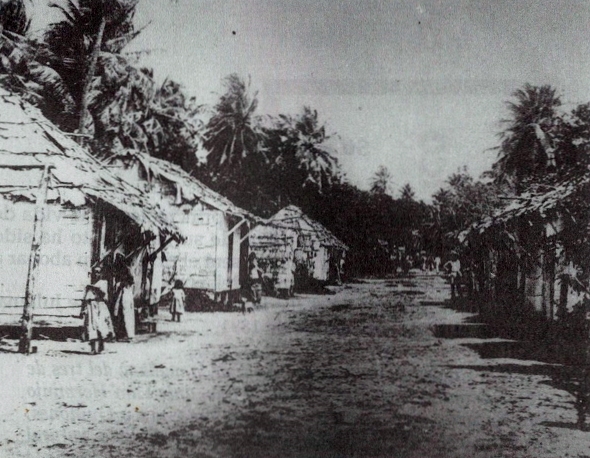
Context
People are shaped by their experiences, to fully understand the individual Pedro would become, we have to understand the social and political context of the time.
In 1898, when Albizu was just 7 years old, he sees General Nelson Appleton Miles and his troops march into Ponce. They tore down Puerto Rican flags and put up American flags foreshadowing what was to come.
But what were the reactions to these early US actions on the island?
Juan Gonzalez writes,
When General Nelson Appleton Miles landed in the town of Guánica on July 25, 1898, in the midst of the Spanish American War, most Puerto Ricans greeted his arrival and rejoiced at its promise to end Spanish colonialism.
From Juan Gonzalez’s Harvest Of Empire – A History Of Latinos In America n
Islanders were sold a dream, thinking that the American invaders were bringing them democracy. As time went on, it became apparent that they were there to bring their own, unique brand of colonialism. Some of their first orders of business were decreasing already low wages, devaluing the island’s currency by 40% and switching the language in schools from Spanish to English, a law that was only overturned in 1947. Formerly, Jibaros who previously were able to lead largely self-sustainable lives, now found it necessary to work on sugarcane refineries or on tobacco and coffee plantations. These years also saw a sharp decrease in the home needlework industry, leading more women to work in factories.
Albizu attends university in America
Albizu Campos did not attend school nor learn how to read until he was 12 years old. The kindergarteners laughed at him, however not for long, as he completed all 8 grades in 4 1/2 years. He then attended Ponce High School. The school was almost exclusively white, elite students, so Albizu was not their typical student. He graduated, just two and a half years later. He had a 95.93 percent average, was class valedictorian and captain of the debate team. Those who knew him remarked on his great sense of humor, but what made a deeper impression were his natural leadership and incredible speaking skills. One such story goes that at a school event, Albizu Campos met the great poet, lawyer, journalist and revolutionary José De Diego, who was so impressed by his intelligence and speaking, that he wrote recommendation letters and helped him get into the University of Vermont.
Authors note: Some have stated that it was after his return from the military service that he supported Puerto Rican independence, this is not completely true. Rosa Meneses Albizu Campos (Albizu’s granddaughter) recounted the story of Don Pedro meeting Jose de Diego, and Diego being impressed with how he spoke for the need for Puerto Rican independence. Keep in mind this was when he was in high school. He began more actively and closely analyzing the colonial status of Puerto Rico after his return from the military, and after witnessing egregious racism in the southern United States, however his speaking in support of Puerto Rico’s independence started prior.
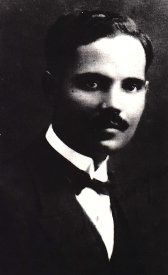
Don Pedro went on to Vermont University on a scholarship in September 1912 and he began studying agriculture. Several professors encouraged Albizu to apply to Harvard and he did so successfully on May 6, 1913. He began studying Chemical Engineering at Harvard that September. Since he was a recipient of the Price Greenleaf aid for low-income students, this meant he was housed in somewhat dilapidated housing on Mt Auburn Avenue.
While at Harvard, Albizu Campos witnessed the behavior of white male students, from wealthy families, that had attended prep schools and had all the benefits of privilege. He saw them repeatedly fail on exams, get drunk, and later vomit on the streets outside the college. The students even had a day called “Bloody Monday”; when sophomores and freshmen would beat each other for no real reason. Don Pedro never partook in either. However, these experiences were important to him; he had an inside look at the ruling class of America and it was very eye-opening.
Don Pedro also experienced some notable difficulties during these years: The first was that his scholarship and the financial aid he was receiving did not cover all his expenses and his financial situation was unstable. Thus, he had to work several different jobs. He taught Spanish to students at Walpole High School and tutored Harvard students in chemistry, French and Spanish. In addition, he wrote articles for the Christian Science Monitor, the Harvard Crimson and two Puerto Rican newspapers. He was also the president of the Cosmopolitan Club and the League to Enforce Peace. At one point, Albizu even cleaned gardens and mowed lawns to earn money.
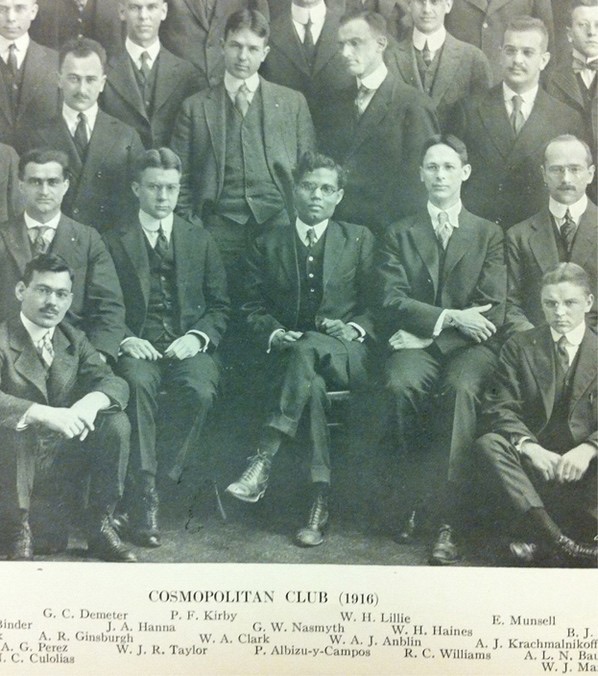
He describes these financial hardships in a letter to his sister,
“I have not written because I have found myself in a very precarious financial situation. I did not want to cause you grief and decided to bury myself in silence. I am negotiating to see if I can obtain a loan and I am also trying to find a position for next year[…]. I have not lost hope.”
Excerpt from letter Albizu Campos sent to his sister.
His other difficulty was that because he had been using improper eyeglasses, he was told by his doctor not to read for a while to help repair the damage the improper glasses had done to his eyes. During this time he attended lectures, however, was unable to read or study, which led to him getting a D in one class. In a letter to the admissions committee in June 1916, he expresses how disappointed he was in this grade and how he had done the utmost to prepare for his exams, however, had been unable to study because of the doctor’s orders.
Albizu graduated with honors in 1916, earning an A.B in Philosophy and Letters. According to his Harvard student records, in the course of his education there, he studied military science, chemical engineering, anthropology, mineralogy, American and world history, composition, public speaking, mathematics, algebra, geometry, botany, debate, drawing, economics, education, English, German, Italian, Latin, Greek and, specialized in chemistry, French and Spanish. He was fluent in Spanish, English, French, German, Portuguese, Latin and Ancient Greek 5. (Source: page 4 of an application submitted to the Harvard University Appointment Office for student work).
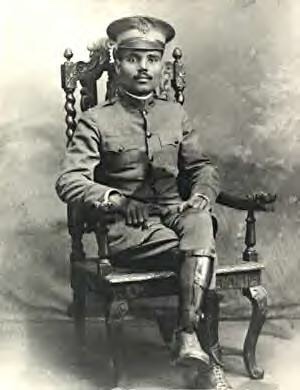
During WWI, he joined the United States Infantry in 1917. He was the only non-white lieutenant and faced brutal racism there. The other soldiers would make racist comments and jokes right in front of him, thinking he couldn’t understand, unaware he understood every word.
Author’s Note: some authors have stated that it was the racism he experienced in the military that made him “radical” and “anti-american”. To think Albizu never experienced racism in America as an Afro-Boricua in the 1910’s is absurd. It would also be farcical to think he hadn’t experienced racism at the almost entirely white Ponce High School. What’s more, his father denied him because of his skin color (as well as the socio-economic status of his mother). Thinking that this was why Albizu became “radical” would be saying his resistance was a personal enmity, rather than a matter of respect and principles.
By 1919, he was honorably discharged from the military and went back to Harvard. He then went on to attend Harvard Law School. It was then that he had a great realization; no matter how good his grades were or how much teachers praised him, he would never be seen as a true equal. In a land of elites where the likes of J.P Morgan, Franklin Roosevelt, and T.S Eliot were part of the Harvard Final Club, Albizu was an outsider. A deep desire and will to see his island become sovereign rose inside him. He began his research by studying various documents including the US Constitution, The Declaration of Independence, The Magna Carta, The Articles of the Confederation, The Congressional Record, The Teller Amendment, The Cuban American Treaty of 1903, The Platt Amendment, Parliamentary Rules of Spanish Cortes Generales, The Puerto Rican Charter of Autonomy, The International Maritime Committee and The Treaty of Paris. He came to the conclusion, after studying the documents, that The Treaty of Paris was “a violation of international law” and “a real estate closing” on Puerto Rico.
The Treaty of Paris (1898) ended the Spanish American War, placing Cuba as a protectorate and Puerto Rico, the Philippines, and Guam under the control of the United States.
Albizu also spoke out in favor of Irish and Indian independence. He even worked with Eamon de Valera as a consultant in drafting the Irish constitution. Another time, he mediated a discussion between students and professors on the topic. Albizu happened to be the only one who supported full independence for Ireland. And, on yet another occasion he spoke to 1400 faculty members and students, giving such an impassioned speech that Lord Miller, an Englishman who vehemently argued against Irish independence said the following:
I am a British nobleman so there is no need to inquire my opinion on the Irish question. But gentlemen, I would not be British, I would not be a nobleman if I failed to admit that Mr Campos has just delivered the most complete, brilliant speech on this matter, that I have ever heard.
Lord Miller (member of the British parliament).
In 1920 Albizu Campos met Laura Meneses, a Peruvian Biochemist, who was attending Radcliffe College (the female section of Harvard). She was the first Latin American woman accepted into Harvard, and because she already had a doctorate from Universidad Nacional Mayor de San Marcos in Lima, Peru she was allowed to attend lectures in Harvard college. The mostly white male students treated her terribly. When Albizu Campos held the door for her as she entered a lecture, she was mildly surprised. She noticed him again later that day. She was very soon after formally introduced to him by a mutual friend. Soon after, Laura’s roommate who was going on a trip (also a mutual friend) asked “Pedrito”, as he was known at the time, to look out for her so she wouldn’t be alone. This happened on a Sunday. That Monday, he called her and invited her to lunch, she said no because she was studying. He showed up at her door and she relented and went with him. They spoke for hours. The did the same thing the following day, and again spoke for 3 or 4 hours. That Wednesday, he called her again, but this time, he said he couldn’t come to lunch because he had to study. On Thursday, he called her again and they went to lunch, after talking the whole afternoon he suddenly proposed marriage. She started laughing! To which he responded “how could you laugh? You don’t even laugh when I make jokes, but you laugh when I say something serious?”. (Story recounted by Rosa Meneses Albizu Campos). Albizu wasn’t the least bit discouraged and they soon became very close.

She later recalled,
“His good humor is one of his best qualities. But what I most admired in him, more than his extraordinary intelligence and culture – was his kindness”.
Laura Meneses de Albizu Campos
Don Pedro graduated from Harvard law school in 1921.
In 1921 he went back to Puerto Rico, without his law degree, he was mailed it later that year. Because he was valedictorian, he would have normally made a speech at graduation. However, the college did not want a Puerto Rican, who they knew was incredibly intelligent and passionate about Puerto Rican Independence, to give a speech. His final exams were delayed by a racist professor and his degree was mailed to him in Puerto Rico. .
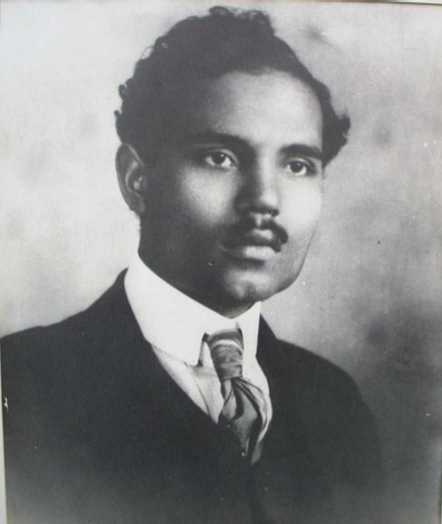
We can conclude that the administrators of the University were upset and embarrassed that a Puerto Rican, people who they considered poor, stupid, incapable of self-rule, senile, and savages, had the highest scores, could speak 6 languages and was such a skilled orator that even his opponents complimented him.
For example, here are some views of Puerto Rico and Puerto Ricans at the time:
“He [God] has made us adept in government so that we may administer government amongst savages and senile peoples”.
Senator Albert J Beveridge
And here a democratic senator from Tennessee, William B. Bates says
“What is to become of Porto Rico and the Philippines? To become States with representation, from that heterogenous mass of mongrels that make up their citizenship? Jefferson was the greatest expansionist. But neither his example nor his precedent affords any justification for expansion over territory in distant seas, over peoples incapable of self-government, over religions hostile to Christianity, and over savages addicted to headhunting and cannibalism, as some islanders are.
Senator William B Bates
And if those quotes aren’t enough, here’s one from two popular writers, Lee Mortime and Jack Lait,
“Porto Ricans are not born to be New Yorkers. They are mostly crude farmers, subject to tropical diseases, physically unfit for the northern climate, unskilled, uneducated, non-English speaking and almost impossible to assimilate and condition for healthful and useful existence in an active city of stone and steel.”
Lee Mortime and Jack Lait
To address these claims we can simply look back in history; between 1607-1609, also known as the Starving Time, the English Colonists in the Virginia Colony, dug corpses from the ground and commenced to eat them because the wheat (and other plants) they had brought from England would not grow in Virginia. How’s that for cannibalism and savagery? Secondly, someone should have told Senator Bates to put himself in a poor Puerto Rican Machetero’s shoes, though most of the time they didn’t have shoes, to spend over 12 hours in a blazing hot field, cutting sugarcane, for the benefit of the empire that is oppressing you and calling you a savage, senile and stupid, while you can hardly feed your children. What would Sen. Bates say to that?
As Nelson A. Denis writes;
“The national perception was clear: Puerto Ricans were ignorant, morally bankrupt, and utterly incapable of self-rule. The US would protect them, tame their savagery, manage their property, and deliver them from four hundred years of solitude”.
From War Against All Puerto Ricans by Nelson A Denis
Given that national perception, a Puerto Rican being valedictorian at Harvard was embarrassing enough; giving the speech was out of the question.
Albizu proposed to Laura again in 1922 and they married on July 7 of that year in Juana Diaz, Puerto Rico. She returned to her studies at Harvard that year at Don Pedro’s insistance, but soon returned to Puerto Rico and joined him there. They had three children, Pedro (1924), Rosa Emilia (1925) and Laura (1927).
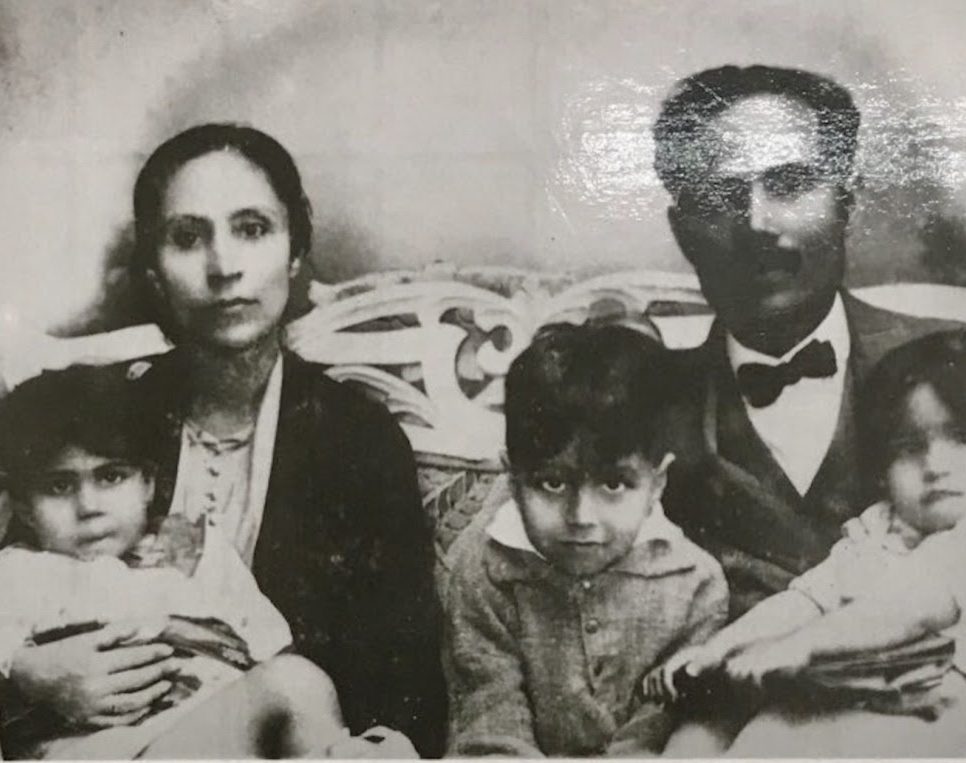
Return to Puerto Rico
1921 and 22 Pedro and Laura received a series of high-paying job offers. His included, Clerkship at The US Supreme Court, Judgeship in Yauco (Puerto Rico), A diplomatic post at a US embassy in Mexico and an Executive Position at a Corporation in Puerto Rico paying 15,000 dollars a year, (equivalent to $99,960.07 today’s money). He even received offers to fund a law office in Ponce. He turned all of these offers down. Instead, he worked as a lawyer for poor Macheteros and Jibaros. Many times they were unable to pay him and paid him back with chickens or things they had grown in their gardens. He rented a house with a dirt floor, and no running water or electricity, in a very, very poor neighborhood of Ponce, called La Cantera. There was trash everywhere and many flies and mosquitos. The house overlooked Central Constancia, a giant sugarcane plantation. He hardly made enough money to feed his family, as we can see this in the next quote from a letter he wrote to a friend in the early 1930s. He writes,
Dear Pepe, we just had a terrible night with my little girl. I beg you to send a bottle of milk of magnesia […]. If at all possible please send $10, or whatever you can.
Sincerely,
Albizu
Undated letter to a friend, presumably from the early 1930s.
Through his writings for El Nacionalista de Ponce and his practice of poverty law, he started to gain a reputation.
“Albizu had no savings or property, but he was building something more important; a reputation as a man of principle, a man who could be trusted”
From War Against All Puerto Ricans by Nelson A Denis
Upon his return to Puerto Rico in 1922, Albizu Campos joined the Union Party of Puerto Rico, which at that time supported Puerto Rican independence. However when, in 1924, the party’s leadership entered an agreement with the Republican Party of Puerto Rico to rid independence from their party agenda Albizu joined the Partido Nacionalista Puerto Rico (PNPR).While it didn’t seem all that important then, his role in the party would change the course of history.
That same year, 1924, Albizu Campos became vice president of the PNPR. He travelled around the world, speaking of independence and gathering support for the movement. He travelled to Cuba, The Dominican Republic, Venezuela, Panama, Peru, Haiti and Mexico. In 1925 he was invited to speak at a commemoration of the birthday of Jose de Diego. A speaker that came on stage before Albizu Campos had said, addressing the small American flags on the railing that if it represented democracy it should let Puerto Rico be free. When Albizu Campos came on stage he began taking flags off the railing and shoving them into his pocket. Then he said to the American flag, mocking the other speaker
“O’ American flag if it is true that you represent liberty and democracy in the world, here you represent colonialism and plunder”.
Pedro Albizu Campos, 1925
He then told the crowd that, because it was not the symbol of Puerto Rico, then it should not be there. The crowd went wild and the incident made headlines.

He became the second president of the PNPR in 1930, after its founder, Jose Coll y Cuchi, left the party, after a disagreement over how the party should be run and their differing political views. Coll Y Cuchi thought that the American oppressor should be treated with respect and he even admired them. He told Puerto Ricans to greet President Herbert Hoover when he visited the island in 1931. Albizu called this “fraternal solidarity with the enemy”. His granddaughter later recalled, “he never believed in collaborating with the empire”
Shortly after becoming president of the PNPR, Don Pedro formed the Women’s Nationalist Committee on Vieques, a small island municipality of Puerto Rico. Vieques was used as a bombing range. The US Military detonated 5 million of pounds of explosives, every year, for six decades. The consequences have been devastating. Unexploded bombs even killed children who were playing on the beach and touched the bombs, unaware of the violence within them. Today, rates of cancer are incredibly high and wildlife on the island contain levels of heavy metals and poisons hundreds of times higher than “safe” levels.
That same year, 1930, Don Pedro created bonds on Wall Street. They were an investment in the Republic of Puerto Rico and would be redeemable from Puerto Rico’s treasury when it became an independent nation.
Albizu discovers Rhoads’ Medical Experiments
In 1932 Albizu Campos acquired a copy of a letter written by Cornelius P. Rhoads, soon to be known as “The Father of Modern Cancer Treatment”, in which he proudly declares that he had inoculated cancer into and murdered his Puerto Rican patients. Rhoads writes
“They are beyond doubt the dirtiest, laziest, most degenerate and thievish race of men ever inhabiting this sphere. It makes you sick to inhabit the same island with them. They are even lower than Italians. What the island needs is not public health work but a tidal wave or something to totally exterminate the population. It might then be livable. I have done my best to further the process of extermination by killing off 8 and transplanting cancer into several more. The latter has not resulted in any fatalities so far… The matter of consideration for the patients’ welfare plays no role here — in fact, all physicians take delight in the abuse and torture of the unfortunate subjects.”
Excerpt from Cornelius P. Rhoads’ 1932 letter admitting to murdering his Puerto Rican patients.
The letter was leaked and Albizu Campos sent copies of the letter to the Vatican, ACLU, Newspapers and Embassies. He wrote his own letter condemning Rhoads and the Rockefeller Foundation. Albizu Campos writes;
“The mercantile monopoly is backed by the financial monopoly … The United States has mortgaged the country to their own financial interests. The military intervention destroyed agriculture. It changed the country into a huge sugar plantation …Evidently, submissive people coming under the North American empire, under the shadow of its flag, are taken ill and die. The facts confirm absolutely a system of extermination. It [The Rockefeller Foundation] has in fact been working out a plan to exterminate our people by inoculating patients unfortunate enough to go to them with the virus of incurable diseases such as cancer.”
Excerpt from Albizu Campos’s letter condemning Cornelius P. Rhoads
In Albizu’s reply, he also compared the American plan to exterminate Puerto Ricans, to the United States’ attempted extermination of Native Americans and Native Hawaiians.
Rhodes is linked to the murders of as many as 250 of his Puerto Rican patients including Jose Maldonado, ‘El Aguilar Blanca’. There was also rumored to be another letter, that was even more heinous than the first. It is believed the Rockefeller foundation destroyed it before Albizu got a copy. Then the cleanup effort began; The Rockefeller Foundation backed Rhodes and conducted a fake investigation, that found him not guilty of the crimes he confessed to. Articles were published saying Rhoads had been “cleared of Porto Rico plot”.
One such example is a February 15, 1932 article from the New York Times that states,
“DR. RHOADS CLEARED OF PORTO RICO PLOT; Letter Telling of Giving Cancer to Natives Is Declared to Have Been Parody. INCIDENT HELD CLOSED Governor Accepts Findings of Medical Association, Health Commissioner and Attorney General.”
The article goes on to say that the accusations were an “unfounded charge circulated by nationalists”.
In 1933 Rhoads was promoted by the Rockefeller Institute from researcher to hematologist. In 1940 he was promoted again to the Director of the Memorial Hospital for Cancer Research. In 1941 he began to study using radiation as a treatment for leukemia. During WWII he began to establish chemical weapons laboratories in Maryland, Utah, and Panama. After WWII he began testing mustard gas as a cancer treatment. He again experimented on Puerto Ricans with the gas, which caused large blisters on the skin and in the lungs. He was featured on the cover of ‘Time Magazine’ for “his work as a “great” cancer doctor” Rhoads continued experiments with Total Body Irradiation (TBI), incidentally the same type of radiation Pedro Albizu Campos would later be subjected to in prison. Rhoads continued his experiments until he died in 1959. Rhoads’ radiation experiments very well may have precipitated his early death. A new investigation was conducted in 2002, however, the hospital he had been director of said, ‘that it doesn’t matter what he did because he has been dead for so many years. In 2003 a major award was stripped from him posthumously.
Sterilization of Puerto Rican Women
Rhoads Medical experiments were not the only ones. For years Puerto Ricans, especially women, were subjected to sterilization, mostly without their knowledge or consent. Widespread sterilization was instigated by Harry Laughlin and more actively by Clarence Gamble, in the 1930s. Gamble personally started 22 “clinics” in Puerto Rico that sterilized women. Laughlin served as an inspiration to Hitler. He thought that all “socially inadequate” people in the US, which included, in his mind, the entire population of Puerto Rico, should be sterilized. In 1936, Law 116 was passed to make forced sterilization of Puerto Rican women legal. More than 1,000 women were sterilized in the Hospital Municipal de Barceloneta a year. In the end, 20,000 women were irreversibly sterilized in this one town alone.
At the highest point more than one-third of the population had been sterilized. Six percent of women and girls 15 to 20 had been sterilized by 1950 and 35% of women 20 to 49 had also been sterilized by the same year. Between 1956 and 1966, 3,000 men were sterilized, this is even less well known. Some US-funded hospitals were sterilizing 50 women per day. Medical students in Puerto Rico, during the 1950s, would be instructed to tell any woman who had 2 children or more to be sterilized. Some clinics refused to offer treatment unless a woman would agree to be sterilized. By 1965 more than 90% of women who gave birth in hospitals were sterilized after the birth, most times they were sterilized without their knowledge. The goal was to have 0% population growth by 1980 and effectively exterminate Puerto Ricans. This would also function to get more women to enter the workforce and make US corporations’ sugar profits higher. The mass sterilization of Puerto Ricans was the biggest event of mass sterilization ever before and ever since.
Land Ownership
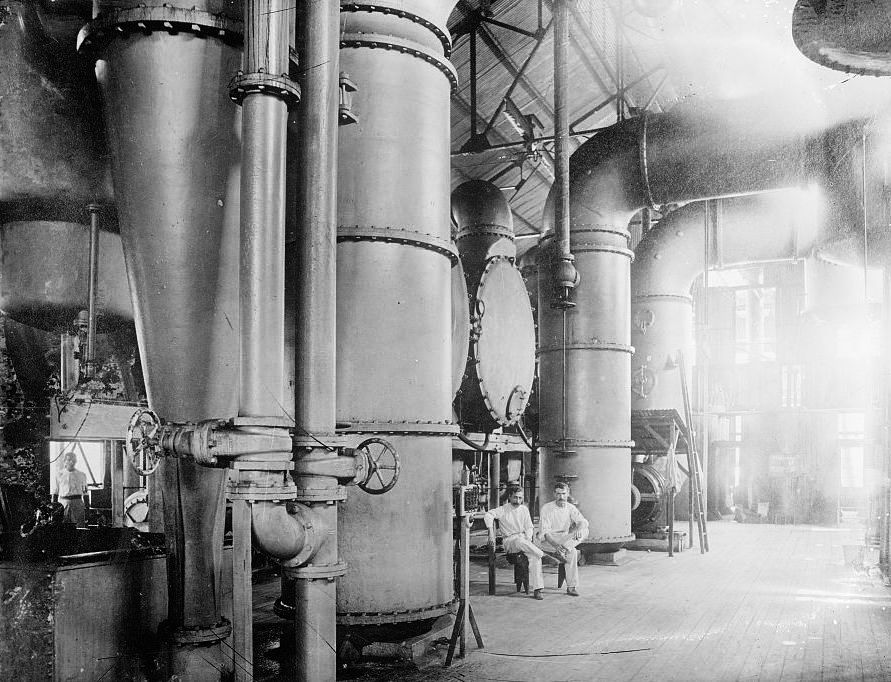
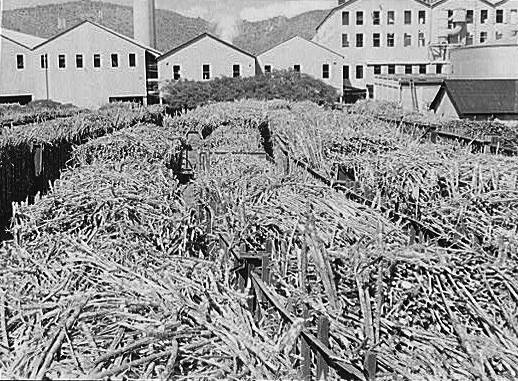

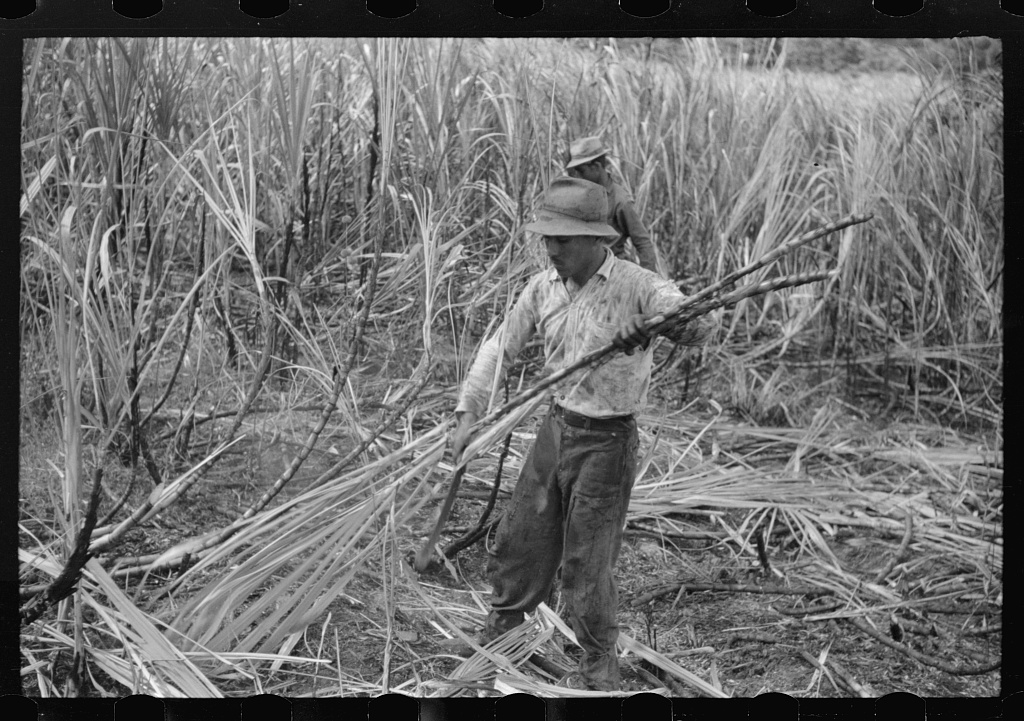
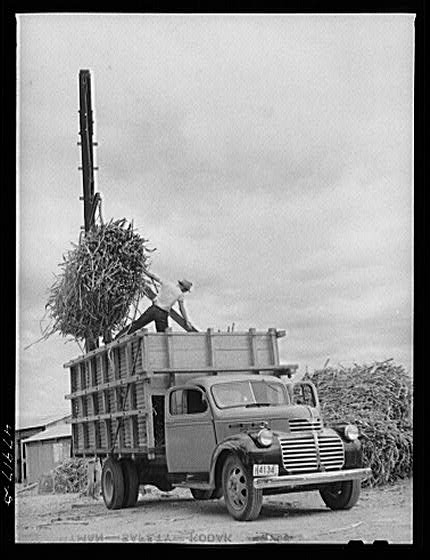
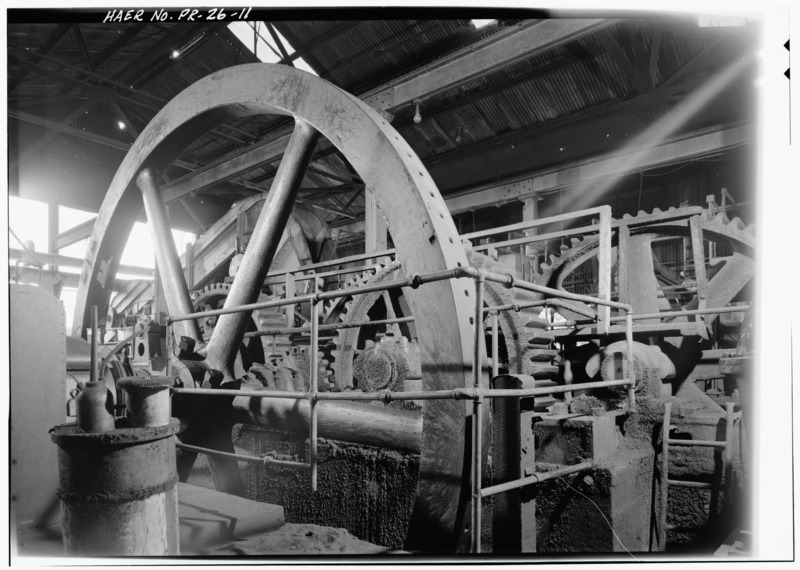
By 1930, 40% of the land in Puerto Rico was owned by ASR (American Sugar Refinery) also known as ‘Domino Sugar’, and American banking interests. These same banks also owned the entire railroad system. The United Fruit Company also owned a large percentage of the land in Puerto Rico, (they also owned 75 % of land in Guatemala at the same time). The army, at the same time, was occupying 13% of the best agricultural land for naval bases, including huge bases in Aguadilla, Salinas, and outside of San Juan. 2% of the population owned 80% of the land by 1925, 70% of the population did not own any land and many were living on land that the sugar company allowed them to “occupy”.
While the American Sugar companies profited, using Borinquen as a giant sugar field, the people were not only being subjected to medical experiments and sterilization but they were also starving. People, especially children, were routinely dying of malnutrition and diseases.
“The 1930s were the most turbulent in Puerto Rico’s modern history…Depression turned the island into a social inferno even more wretched than Haiti today”.
From Juan Gonzalez’s Harvest Of Empire – A History of Latinos In America
In the midst of this “social inferno” rises Don Pedro.
An unexpected victory and cane strikes
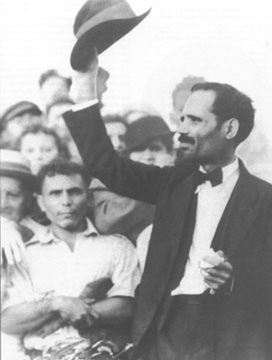
In 1931 Albizu was a lawyer in a case for a Nationalist named Luis Velasquez, unexpectedly, he won the case. The case and its unexpected victory was known as ‘La Bofeta de Velazquez’. In 1932 Don Pedro ran for senate in Puerto Rico, however, he lost the race to Luis Munoz Marin. In 1933, he led a strike against, Puerto Rico Railway and Light and Power Company, because of their monopoly over the island. The next year he was representing cane workers in a case against the United States sugar industry. Despite all his campaigning, debates, editorials, conferences and lawsuits, Albizu was basically ignored. However, what came next would scare the US government and its corporations to their core and finally get their attention
At the end of 1933, after rallying Cane-Cutters, Cane Millworkers, and other underpaid employees at various Centrals (Sugar refineries) workers at Central Plazuela went on strike on November 8, 1933. The strike lasted until December 6, completely destroying the harvest. The next day, December 7, workers at Central Coloso went on strike, and cane fires broke out. Then ASR’s worst fear came true. On December 31, 8,000 workers at the largest sugar plantation and refinery, La Guanica Central, went on strike. The workers set fire to the cane and demanded higher pay. By early January, all of the island’s sugar plantation and refinery workers were on strike. The workers were also rising up against the corrupt Federacion Libre del Trabajo (the Free Federation of Workers) who had signed an island wide contract with the cane workers. The federation did nothing for them and most of its leaders had comfortable positions in the Puerto Rican government. They made promises, but no change arrived, the workers were beyond tired of waiting!
On January 11, 1934 Don Pedro was invited to speak to 6,000 protestors in Guayama. A rain storm began. Not a single person left and Albizu Campos did not leave the stage. He recited ‘Puerto Rico, Puerto Pobre’ by Pablo Neruda while on stage. He spoke for more than 2 hours and the standing ovation lasted 5 whole minutes. The power of his words resonated on the deepest level with the pain and anger Puerto Ricans were feeling at the time.
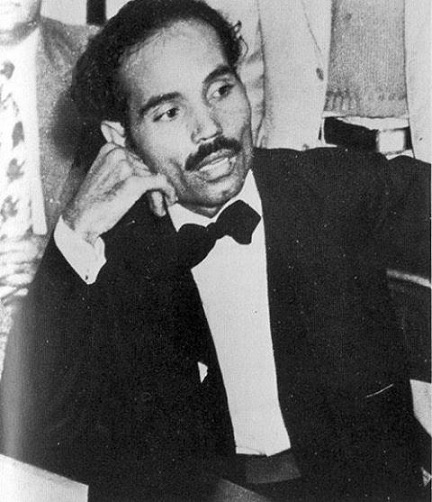
From Nelson A Denis’s War Against All Puerto Ricans“He spoke with an electric, almost religious fervour. He started slowly and built cadence. He cited history and religion, culture and tradition. It started to rain, but no one left the square”
The US realized that Don Pedro and the Partido Nacionalista de Puerto Rico were going to be a real problem for them. They assigned FBI agents to follow Don Pedro everywhere he went. Whenever he left his house, the police station’s central radio station would be notified, and it would be broadcast. They worked in shifts of 10, each group working 40 hours a week, spying on Don Pedro, 24 hours a day, 7 days a week, this continued anytime he wasn’t imprisoned. Don Pedro did have his little ways to get back at them. Like, when he made the 5-mile walk to and from Salon Boricua back to his house, even though he did have a car, just so they’d have to walk the whole way, following him. He also routinely joked about having 40 FBI agents following him. In 2000 Albizu Campos’s extensive carpeta was released under the freedom of information act and it showed exactly what Albizu had claimed all those years before; 42 FBI agents were solely assigned to following and spying on him.
In 1934 Albizu Campos learned of a plan that Theodore Roosevelt jr. (former governor of Puerto Rico) had, to get the assistant secretary of Navy to help Albert Fall and Carlos Chardon to strip Puerto Rico of its natural resources. This was called the Plan Chardon. Albizu Campos also discovered that Carlos Chardon was in charge of the Puerto Rico Reconstruction Administration (PRRA) in an attempt to Americanize the ideas and staff of the University of Puerto Rico. Albizu Campos then held a meeting saying that they wanted to turn the university into “an American propaganda institution”. They declared Don Pedro “student enemy number one”
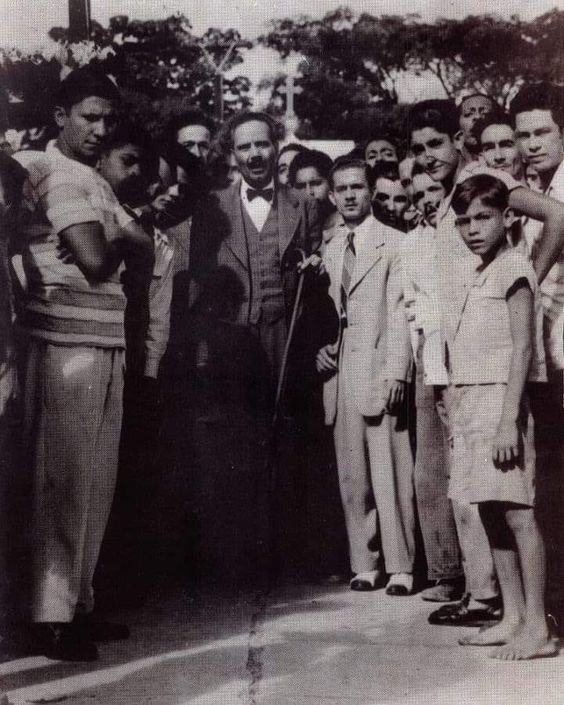
A Meeting With Police Chief Riggs
In 1934, while meeting with a group of striking cane workers from Guanica Central, Albizu Campos received a call from Colonel E. Francis Riggs the police chief of Puerto Rico. He had called to invite Albizu Campos to a talk and have lunch at the illustrious El Escambron. Albizu Campos knew Riggs had ulterior motives, yet he agreed to go. He was already aware of the Riggs family who owned the Riggs National bank. The bank laundered money for right-wing dictators (something the bank did until 2005), they had large shares in The United Fruit Company, they bribed senators to get legislation they wanted, and they even destabilized democratic leaders around South America (using a tactic called filibustering) 6. Riggs was at a table dressed in his full military regalia, completed with all the metals he had. He spoke to Albizu Campos about many things, yet, would not mention the strike. In the end, he asked Don Pedro what he thought of senator Luis Munoz Marin and a few other things. Then he promised him $150,000 (equivalent to $2,876,713.74 in today’s money) and promised him governorship within 10 years. In exchange Riggs wanted to be able to “deal with the strikers himself”, and he wanted Albizu Campos to”stop agitating” the agricultural workers and leading strikes. If Albizu Campos refused, he would make sure Munoz Marin had his support and give him the money. Don Pedro stood up, thanked Riggs and calmly said “my country is not for sale.”
Don Pedro was clearly presented with an opportunity to forget his principles, sell out his people and, abandon his movement, however, he refused to be bought. Riggs, having failed at buying Albizu Campos headed straight to Luis Muñoz Marin with his offer; we can clearly see that Marin took the offer as he became governor just a few years later.
Just days before the meeting with Albizu, Riggs had been in Nicaragua advising and laundering money for dictator Anastasio Somoza. Because Albizu Campos refused his offer, Riggs hired 100 FBI agents to infiltrate the PNPR. He also tripled the size of the Insular Police, he armed them with grenade launchers, machine guns, carbines, and 12 gauge shotguns.
Riggs Declares War
On February 21, 1934, Augusto Sandino, a Nationalist and friend of Albizu Campos was assassinated by the Insular Police. Two days later, on February 23, the workers stopped striking, they had received what they were fighting for, 12-hour workdays and more than double pay. After this victory by the PNPR, Riggs declared
There will be war to the death against all Puerto Ricans
Police Chief of Puerto Rico, E. Francis Riggs
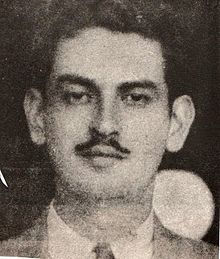
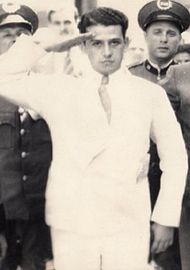
Riggs ordered police to attack a small student march of Cadets of the Republic, a paramilitary branch of the PNPR that Albizu had recently created. It became known as the Rio Piedras Massacre, 3 Nationalists and an elderly man, who had nothing to do with the PNPR, were murdered.
Three months later, Hiram Rosado and Elias Beauchamp shot and killed Riggs, while he was walking home. The two were beaten at the police station and later shot and killed; no trial, no due process. At the funeral, Don Pedro said,
The murder at Rio Piedras was his work…Gen. Blanton Winship who occupies La Fortaleza. Cold-blooded murder to perpetuate murder as a method of government is being carried out by the entire police force.
Part of the speech Albizu Campos made at Elias Beauchamp and Hiram Rosado’s funerals

I find that it’s important to note that it was Riggs and the Police force that started the violence, not Albizu or the PNPR. Note that strikes and legal action were Albizu Campos’s first method to bring about independence and fight for social reforms. After Riggs instigated the violence, there was a retaliation (Riggs’ assassination). Contrary to popular belief, the assassination was not ordered by Don Pedro, but he did support and defend their actions after they were murdered.
Between 1934 and 35 Don Pedro received multiple death threats and his house was attacked multiple times, including 3 times with firebombs. He moved his family to Aguas Buenas, Puerto Rico and had an armed Nationalist outside, at all times to protect them. At one point he offered to divorce Laura for her and the children’s safety. Keep in mind this was a drastic suggestion given he wouldn’t even take on divorce cases because of his devout Catholicism and he absolutely adored his wife, and never wanted to divorce her. She absolutely refused. She made it clear that his fight, was her fight too and she would stand by him no matter what happened. She later recalled the following in a letter to one of their daughters:
“Since I got married I have lived in that world that, in order not to become a mirage, demands the continuous oblation of our personality. For this I had to give up my most basic needs, my whims, my desires, my concerns. The only thing I did not renounce was my joy because I was next to your father whose greatness highlighted the superficiality of all things.”
Doña Laura Meneses de Albizu Campos
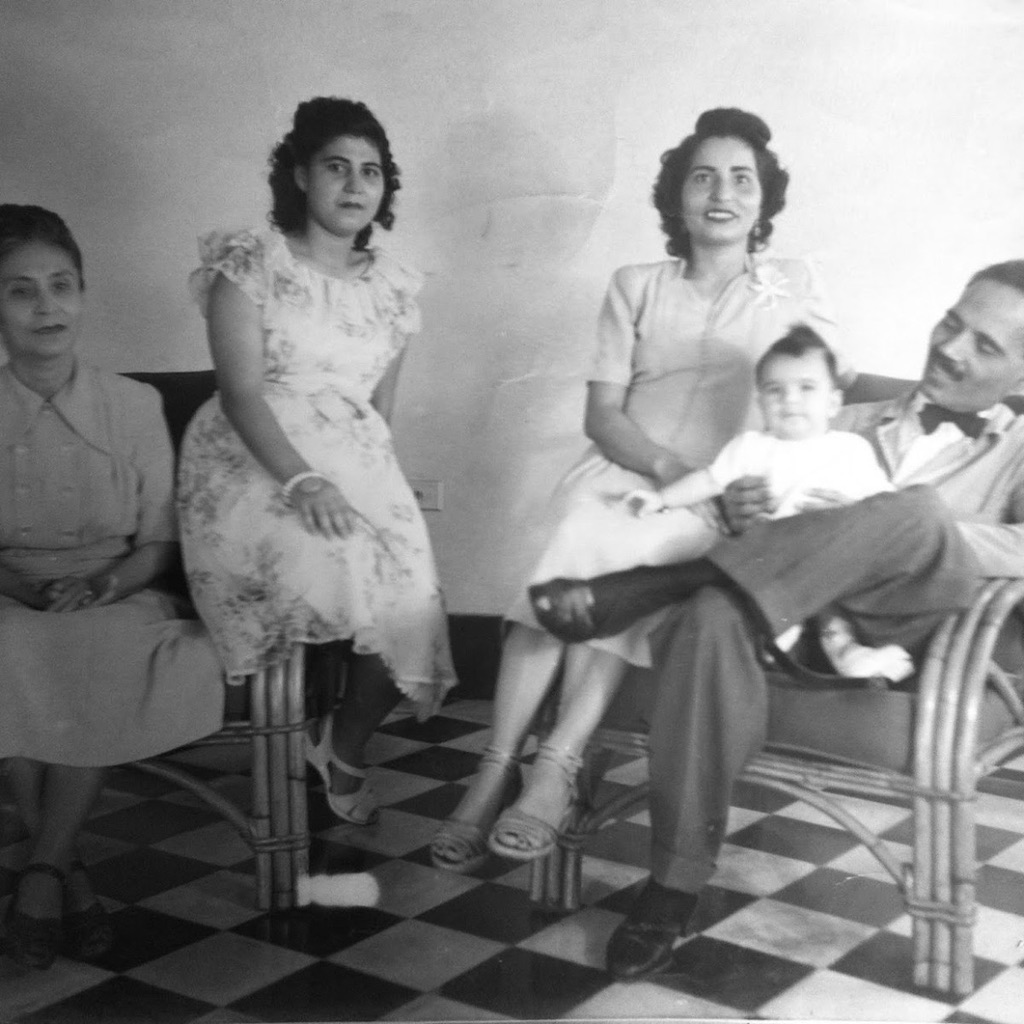
First Arrest
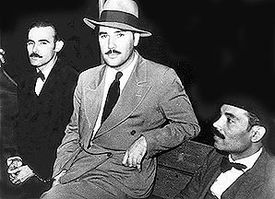
In April 3, 1936, a federal grand jury, proposed an indictment against Albizu Campos, Luis F. Velázquez, Clemente Soto Vélez, Juan Antonio Corretjer and members of the Cadets of the Republic: Erasmo Velázquez, Julio H. Velázquez, Rafael Ortiz Pacheco, Juan Gallardo Santiago, and Pablo Rosado Ortiz. Almost 40 National guardsmen, FBI agents, military intelligence personnel, undercover detectives, and Governor Winship’s police armed with blackjacks, rifles, tear gas, Thompson submachine guns and attack dogs came to arrest the 6 unarmed Nationalists. The federal grand jury said that the Cadets of the Republic would be used to overthrow the US government. It also stated that Albizu Campos was “seditious” and “attempting to overthrow the United States”. There was even propaganda spread, saying that The Cadets of the Republic took an oath to overthrow the United States. This was blatantly untrue; the oath they took was to fight for Puerto Rico’s independence “by any means necessary”.
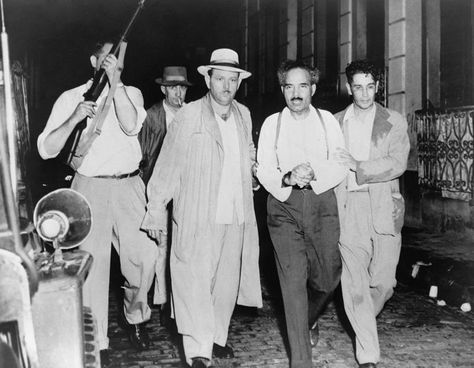
A jury of 7 Puerto Ricans and 5 Americans found them not guilty. The judge was unhappy with the results and called for a new trial and a new jury. This time the jury was 10 Americans and 2 Puerto Ricans, they were all found guilty. Never mind this is blatantly illegal. The Nationalists were imprisoned at the Federal penitentiary in Atlanta. Don Pedro lost his Law License after going to prison. He later told Laura,
“The Americans knew what they were doing – they needed me off this island right away. Six more months in 1936, and we’d have gotten our independence.”
Interestingly, many historians concur with this view and agree that if Albizu hadn’t been arrested, independence would have come soon after.
While imprisoned in Atlanta, Don Pedro worked in the prison library and translated letters for other prisoners. He also wrote for several Argentinian and Mexican publications under a pseudonym. During his time there, his health started deteriorating and the warden hushed reports of anaemia and low hemoglobin. Vito Marcantonio advocated for Albizu Campos during this time and demanded that these reports be investigated.
Rosa Meneses Albizu Campos recounted one story that a man named Pedro Rodriguez Capó was sent from Washington to speak with Don Pedro, Don Juan Antonio Corretjer, Don Clemente Soto Velez and Don Luis F. Velazquez. He told Albizu that if the Nationalist party would stop clamoring for independence, he could become the first elected governor of Puerto Rico. Albizu told him no and said that he should go ask the other imprisoned Nationalists, because he didn’t want to make a decision on their behalf. They all refused the offer. Rodriguez Capó then went to Puerto Rico where he offered the same thing to various members of the Nationalist party who unanimously told him no.
Winship soon after forbade all speeches, even at funerals. He conducted warrantless searches. He declared Martial Law wherever and whenever he pleased. His police broke into people’s homes, stole things from them and prevented people from entering and exiting certain places for no apparent reasons.
While Don Pedro was imprisoned, it was Laura who kept his revolution alive. She moved to New York and even founded an organization for political prisoners. She rallied for his release and spoke around the world in support of the PNPR’s cause. In the more than 7 years he was imprisoned, Laura was only permitted one visit.
The Ponce Massacre

From Gen. Blanton Winship’s official statement on the Ponce Massacre.“two shots were fired by the Nationalists … with Nationalists firing from the street, and from roofs and balconies on both sides of the street … [the police] showed great patience, consideration and understanding of the situation, as did the officers and men under him [the Police Chief].”

Release From Prison
J Edgar HooverHe [Albizu Campos] receives many notable visitors and holds meetings in his [hospital] room. Campos continues to be hospitalized of his own volition in order to elicit sympathy and appear as a martyr.
Return to Puerto Rico and a present from Muñoz Marin
The hour of decision has arrived
Pedro Albizu Campos speaks at Escobar Stadium on December 15, 1947
It was clear Albizu’s imprisonment had seriously damaged the Nationalist movement.
“The hour of decision has arrived!”
The Plan
Author’s Note: In recent years I have heard individuals saying that Albizu Campos was “a terrible military strategist”. Albizu knew very well that defeating the US military in a war was more than impossible, the plan was a strategic one and a closer look at the details clearly demonstrate Albizu’s skills as a military leader and strategist. The reason that it ended so tragically and appeared to be a failure was because Faustino Diaz Pacheco had told every detail to the FBI.
Revolution or Tragedy?
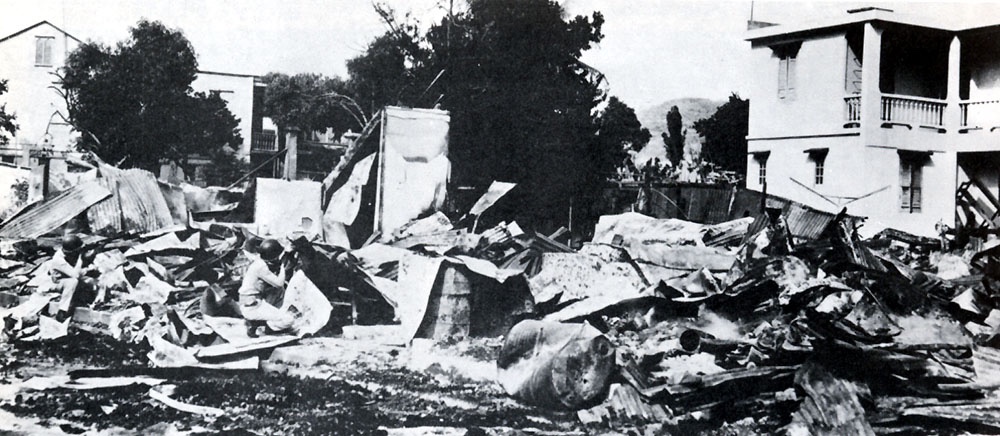
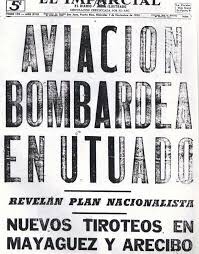
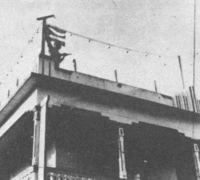
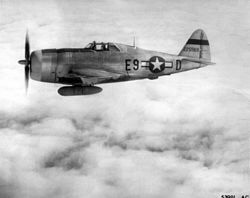

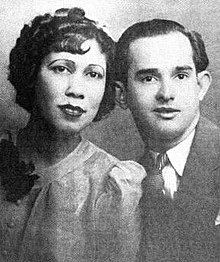
Imprisonment and Medical Experiments


”Last November, when I began to visit my father in the colonial prison, I noticed that my hands were swollen. I did not say anything, so as not to alarm him, but one day he took my hands and looked at me with anguish in his eyes. I asked him if it was caused by radiation and he said ”yes”.
Federico Ribes Tovar. Albizu Campos: Puerto Rican Revolutionary. New York] Plus Ultra Educational Publishers, 1971.
Laura also interestingly noted in her speech that those who had been spreading propaganda against Albizu stopped ridiculing his use of cold wet towels to provide relief from the radiation burns after scientists published findings (in 1955) showing that water was “the best defense for living tissues exposed to radiation”. (from Federico Ribes Tovar. Albizu Campos: Puerto Rican Revolutionary. New York Plus Ultra Educational Publishers, 1971.) The propagandists, including or rather, principally, Luis Muñoz Marin had touted this as “evidence” that he was mentally unbalanced between 1951 and 1955. Once the scientists published these findings, in 1955, this talking point was seldom mentioned, even in passing.
Rosa Meneses Albizu Campos (Albizu’s granddaughter) noted that Albizu understood very well what was happening to him because of his studies of chemistry and chemical engineering. Rosa also recalled that Albizu even stated in an interview from prison that the radiation attacks were going to cause either a heart attack or a stroke. Sadly, that is exactly what happened in March of 1956.
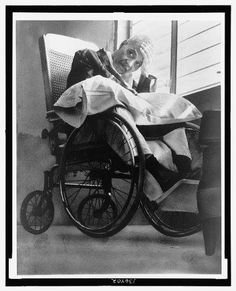
Albizu Campos lived for his people and died in sacrifice imposed by the enemies of independence and freedom. The lives consecrated to the cause he lived to transcend death. His example illuminates the future and his memory grows until it culminates in insuperable heights. Puerto Rico will reach the goal signaled by him and the recognition of his people will become the pedestal of his glory.
Doña Laura Meneses de Albizu Campos
Rosa recalled how her mother (Laura Albizu Campos) would tell her how Don Pedro loved music, especially Danzas and how he would dance with her. His close friends recalled his good sense of humor and his kindness. Behind the great leader and revolutionary genius, was a humble yet proud man who loved his country, his people and his family motivated by principle
What did Albizu Campos and the 1950 Revolution accomplish?
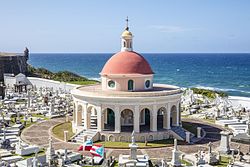
Courage is all that makes it possible for a man to step firmly and calmly through the shadows of death; and it is when a man passes serenely through the shadows of death that he enters immortality.
Pedro Albizu Campos
If this is true, then Don Pedro Albizu Campos is truly immortal. Don Pedro showed us the true meaning of courage. He showed us what it truly means to love your country and to never compromise your principles.
I invoke that Don Pedro is never forgotten.
I invoke that Puerto Rico will see the liberty that Don Pedro gave his life for.
Dedicated to Don Pedro Albizu Campos with the deepest love and respect.
“Que Viva Puerto Rico Libre!“
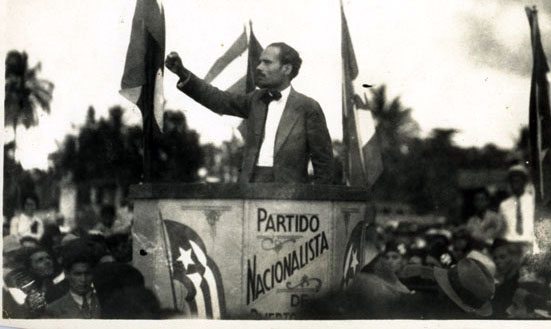
Quotes from Don Pedro—
“The Americans have nothing to offer the world unless it is the destruction of their own empire. The American empire is a curse even to it’s own people”
“When tyranny is law, revolution is order”
“For the past fifty years, the United States has been at war with Puerto Rico. They steal our land, sterilize our women, inject us with cancer and tuberculosis, they find traitors to rule over us, parasites who live by robbing their own people. . .hiding in castles where they drug themselves with morphine and drink rum constantly.”
“Empires are devils disguised as guardian angels. The American flag is a skull and crossbones over two bunches of bananas.”
NOTES:
- Don/Doña are terms of endearment used to show respect to an elder or highly respected individual.
- Some sources state September 12, 1891 as his birthday, while others stay it as June 29th, 1893. Don Pedro used both dates and years as his birthday, further confusing the situation. Here, I have chosen to use September 12, 1891, as his birthday because; 1. a birth certificate for Pedro Campos born as an illegitimate child to Juliana Campos in Machuelo Abajo Ponce states his birth date as September 2, 1891 and 2. this is the date that Nelson A. Denis uses in his book, ‘War Against All Puerto Ricans’ a huge amount of thorough research was done and I have found Denis’s research absolutely trustworthy
- His birthplace is sometimes stated as Barrio Tenerias Ponce, Puerto Rico, however the birth certificate shown above states his birthplace as Machuelo Abajo, Ponce. It is again, unclear where he was actually born and historians continue to debate the topic
- “Puerto Rico, Registro Civil, 1805-2001,” database with images, FamilySearch (https://familysearch.org/ark:/61903/3:1:939Z-RYZ4?cc=1682798&wc=9PY3-FM9%3A129440701%2C143161501 : 14 October 2019), Ponce > Nacimientos 1889-1892, t. 9-16 > image 1389 of 2147; citing Puerto Rico Departamento de Salud and Igesia Catolica (Puerto Rico Department of Health and Catholic churches), Toa Alta.
- The number of languages it has been said that Albizu Campos spoke varies between 6 and 8. His grandaughter, Rosa Meneses Albizu Campos stated that he spoke 6 languages.
- Filibustering was used by the Riggs Bank to start a “revolution” under false pretenses, and overthrow a democratically elected leader so corporations such as the United Fruit Company could take power and land. The Riggs Bank would finance these false right-wing takeovers. Riggs Bank did this until they finally faced legal consequences in 2005. It was discovered that the bank had laundered money for Chilean dictator Augusto Pinochet.
- Vidal Santiago Diaz was subjected to torture at the Ramey Air Force Base in Aguadilla, Puerto Rico for several weeks, starting in late September 1950. After he refused to divulge any information to them, he was taken back to Salon Boricua. He was basically held prisoner there for a about week (the FBI had told him that if he left without their consent he would be shot). Vidal still managed to tell a Santurce Cadet of the Republic that Faustino was the rat they were looking for, knowing that the news would get back to Albizu Campos. On October 30, 1950, he engaged in a 3-hour gunfight with 40 policemen, national guardsmen, and FBI agents. The barber was shot 5 times but still managed to survive the incident.
- Carpetas later revealed that Faustino had been an informant for 20 years. All the while his brother, Raimundo, was a loyal nationalist and the party’s top lieutenant. After discovering Faustino’s betrayal, Albizu didn’t have much of a choice but to remove Raimundo as the commander in chief. Raimundo’s shame for his brother’s actions led him to lead the attack on La Fortaleza which he knew was a suicide mission.
- Laura Meneses de Albizu Campos believed that he was left without treatment for longer than 2 days.
WORKS CITED
Democracy Now. “War against All Puerto Ricans: Inside the U.S. Crackdown on Pedro Albizu Campos & Nationalist Party.” Www.youtube.com, 21 Apr. 2015, http://www.youtube.com/watch?app=desktop&v=khkONOYSB8Q.
De Jesús, Anthony.” I have endeavored to seize the beautiful opportunity for learning offered here: Pedro Albizu Campos at Harvard a century ago.” Latino Studies 2011
Denis, Nelson A. “King of the Towels: The Torture and Murder of Pedro Albizu Campos.” Latino Rebels, 10 Mar. 2015, http://www.latinorebels.com/2015/03/10/king-of-the-towels-the-torture-and-murder-of-pedro-albizu-campos/. Accessed 31 Jan. 2022.
—. “Pedro Albizu Campos.” WAR against ALL PUERTO RICANS, 25 Feb. 2015, waragainstallpuertoricans.com/pedro-albizu-campos/.
—. War against All Puerto Ricans : Revolution and Terror in America’s Colony. New York, Bold Type Books, 2016.
“Drew Pearson Interviews Gov Luis Muñoz Marín.” http://www.youtube.com, http://www.youtube.com/watch?v=GWU9o5xjfKQ&t=543s.
Fernandez, Johanna. YOUNG LORDS : A Radical History. S.L., Univ Of North Carolina Pr, 2020.
González, Juan. Harvest of Empire : A History of Latinos in America. New York, Penguin, revised edition, 2022.
Kaike, Anani. “Don Pedro Albizu Campos, a Genius Freedom Fighter.” Voice of the Water Lily, 30 July 2019, voiceofthelily.water.blog/2019/07/30/don-pedro-albizu-campos-a-genius-freedom-fighter/.
—. “It’s a Colony, Why Does It Matter? Puerto Rico, US Occupation, Uprising and Cornelius Rhoads’s Medical Experiments on My People.” Voice of the Water Lily, 25 Mar. 2019, voiceofthelily.water.blog/2019/03/25/its-a-colony-why-does-it-matter-puerto-rico-us-occupation-uprising-and-cornelius-rhoadss-medical-experiments-on-my-people/.
“Puerto Rico.” The Eugenics Archives, eugenicsarchive.ca/discover/connections/530ba18176f0db569b00001b. Accessed 31 Jan. 2022.
Gonzalez·, Bianca. “Eugenics and Contraceptives in Puerto Rico: A History of Manipulation and Unethical Experimentation.” Liberal Currents, 22 May 2020, http://www.liberalcurrents.com/eugenics-and-contraceptives-in-puerto-rico-a-history-of-manipulation-and-unethical-experimentation/.
TIMES, Wireless to THE NEW YORK. “DR. RHOADS CLEARED of PORTO RICO PLOT; Letter Telling of Giving Cancer to Natives Is Declared to Have Been Parody. INCIDENT HELD CLOSED Governor Accepts Findings of Medical Association, Health Commissioner and Attorney General.” The New York Times, 15 Feb. 1932, http://www.nytimes.com/1932/02/15/archives/dr-rhoads-cleared-of-porto-rico-plot-letter-telling-of-giving.html.
Pelet, Valeria. “There’s a Health Crisis on This Puerto Rican Island, but It’s Impossible to Prove Why It’s Happening.” The Atlantic, 3 Sept. 2016, http://www.theatlantic.com/politics/archive/2016/09/vieques-invisible-health-crisis/498428/.
Federico Ribes Tovar. Albizu Campos: Puerto Rican Revolutionary. New York] Plus Ultra Educational Publishers, 1971.
Radio, Independencia. “Ep. 114 – Pedro Albizu Campos.” Www.youtube.com, 28 Oct. 2019, www.youtube.com/watch?v=Fosld1XKZHM.
Harvard Archives “Pedro Albizu Campos’s Harvard student records” _uaiii_15_88_10_box120_campos (1).pdf
Cancel Miranda, Rafael. “Rafael Cancel Miranda Habla Sobre Pedro Albizu Campos.” Www.youtube.com, 21 Apr. 2015, http://www.youtube.com/watch?v=B4gQ4_fYj6I&t=310s.
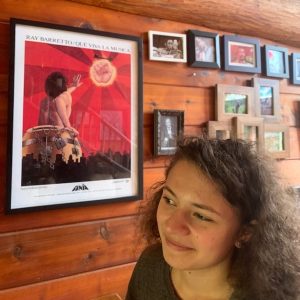
Pingback: Ep. 82 The Philosophy of Puerto Rico’s Greatest Liberator: Don Pedro Albizu Campos – Voice of the Water Lily
Pingback: Bonus Episode: Blanca Canales – Revolutionary Warrior – Voice of the Water Lily
Very good program. I do, however, find it ironic that Don PAC embraced the religion of the colonists. A religion created by the wealthy to oppress their subjects and keep aristocrats in power. The use of religion has no place in our politics and as we’re experiencing today, continues to be used as justification to keep women, LGBTQ+ and POC from being full citizens and reaching their full potential.
LikeLike
Thank you for listening and sharing your thoughts! I absolutely agree with your critique of religion and that it doesn’t have a place in today’s politics. However Don Pedro was in his way, reclaiming Catholicism. His nationalist Catholicism was actually rejected by the ruling class and wealthy Catholics and they denied its legitimacy. We also have to remember that in Don Pedro’s time, there was no real recognition of the devastation that Christianity caused the Taino ppl when it was enforced upon them by the conquistadors. So I think it’s important to keep all this in mind when talking about Don Pedro and his religious beliefs.
Thank you for your feedback
Anani
LikeLike
Why didn’t he see it? Why accept the spirituality of the oppressor and not the ancestors? It doesn’t make sense. Just because religion wasn’t acknowledged as oppressive (which I disagree with that statement), doesn’t mean it should have been accepted. There were slaveowners and abolitionists. You either choose right or wrong. People know the difference.
LikeLike
Unfortunately we can’t ask him these questions…not that those are the questions I would ask him if I had the chance….
thank you for sharing your opinion and thoughts. This feedback is super important and I’m very grateful for it.
LikeLike
There was an almost 20 year difference between the abolition of slavery (1873) and Don Pedro Albizu Campos’ birth (1891/1893) You may want to note that Don Pedro’s mother was formerly enslaved.
LikeLike
Pingback: Ep. 53 Boricua Heroes You Should Know: Don Pedro Albizu Campos (revised edition) – Voice of the Water Lily